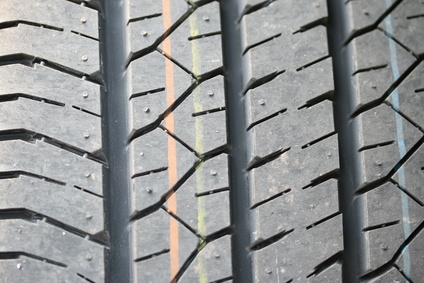
The terms camber and caster are two of the measurements used in aligning automobile wheels, with the third measurement being toe. Camber and caster alignment affect tire wear as well as vehicle steering and handling.
Camber is a measurement of the sideways tilt of a pair wheels. When the tops of the wheels are leaning toward each other when viewed from the front, this is called negative camber. When the tops are leaning away from each other, it is called positive camber. Vehicle wheels should have zero camber, which means they are parallel to each other and do not tilt.
Caster is the measurement of the angle of the steering axis. Though hard to see on an automobile, the front forks of a bicycle show positive caster. The front fork of a bicycle slopes forward to the wheel instead of being exactly vertical. This angle helps the wheel move forward naturally without veering sideways. Automobiles also have positive caster.
Camber, caster and toe (the parallel alignment of the wheels as viewed from above) all play a role in keeping the tire tread properly in contact with the road surface. When a vehicle undergoes a wheel alignment, all these measurements should be checked and brought within manufacturer recommendations.